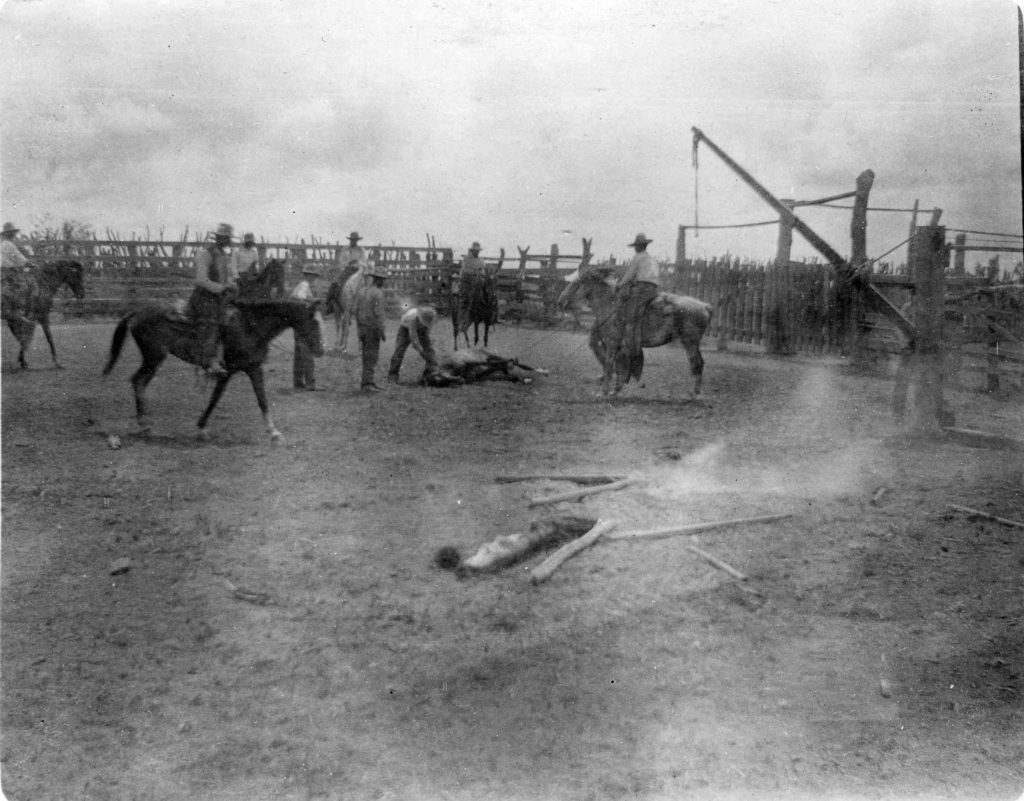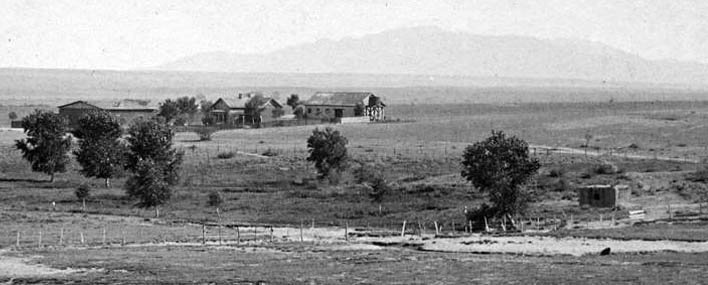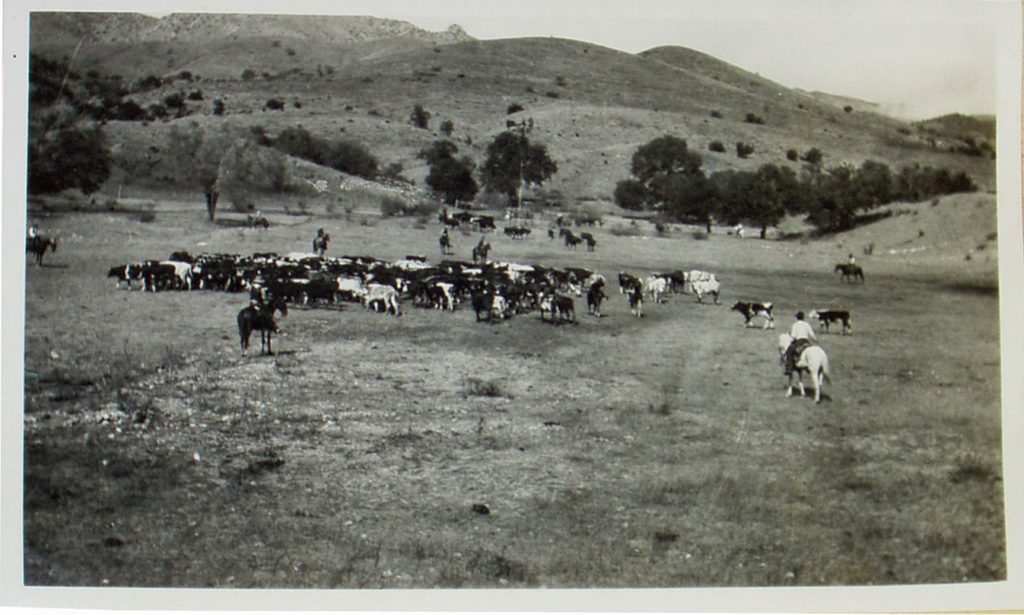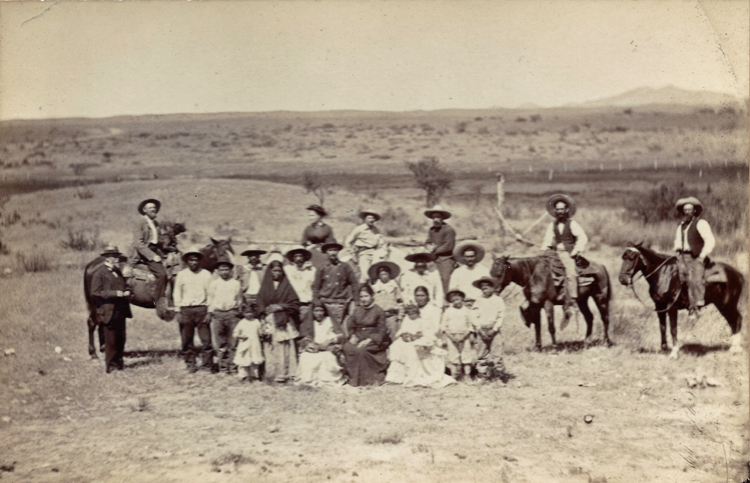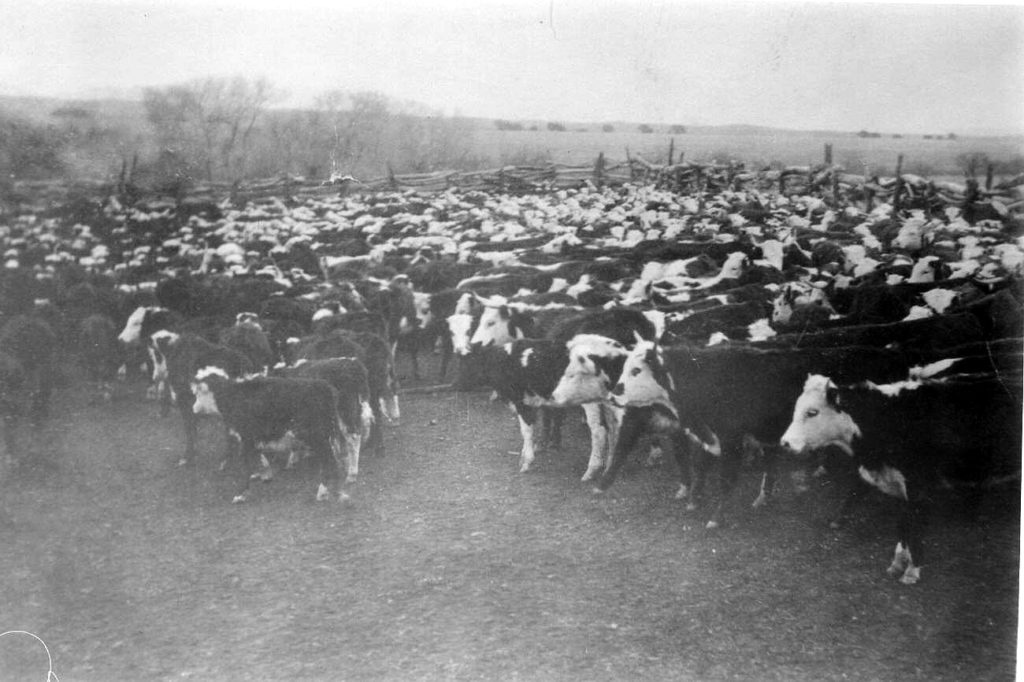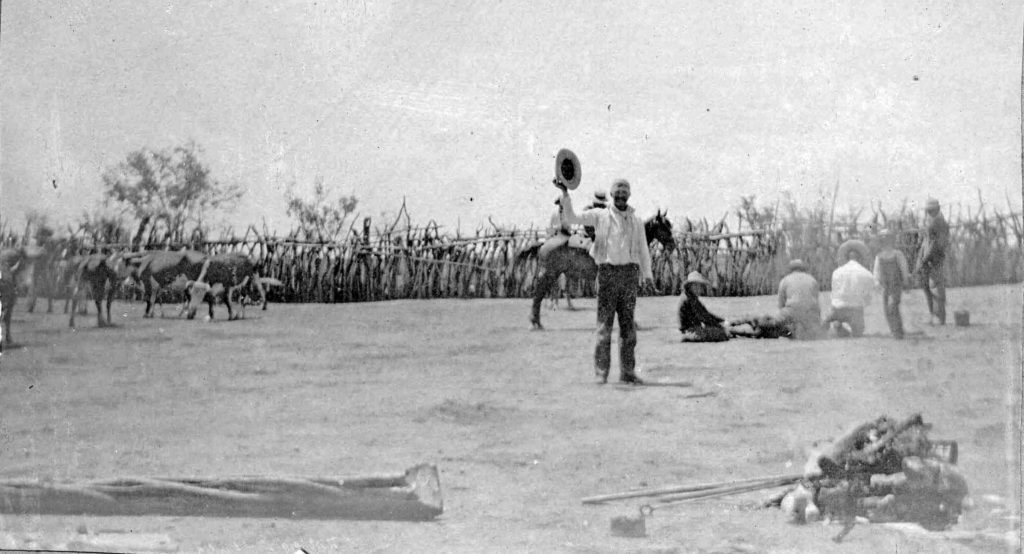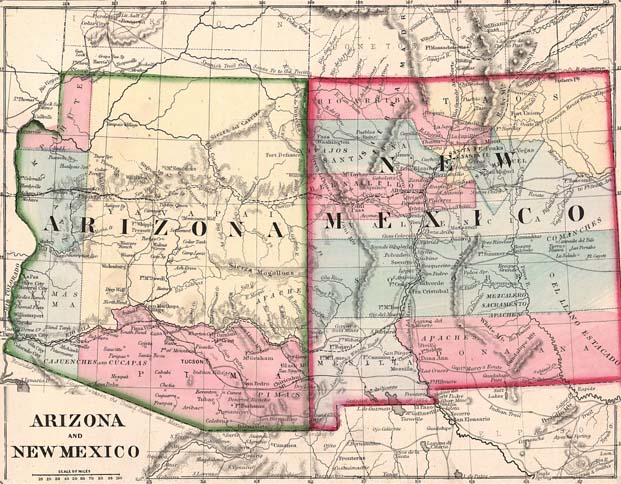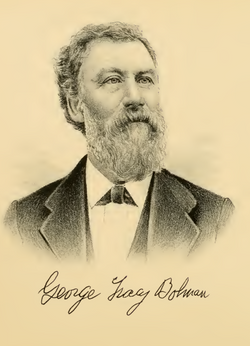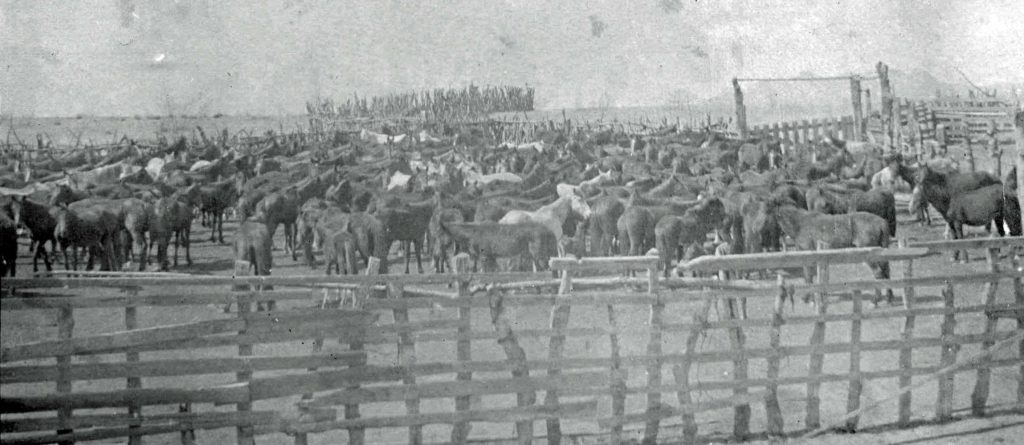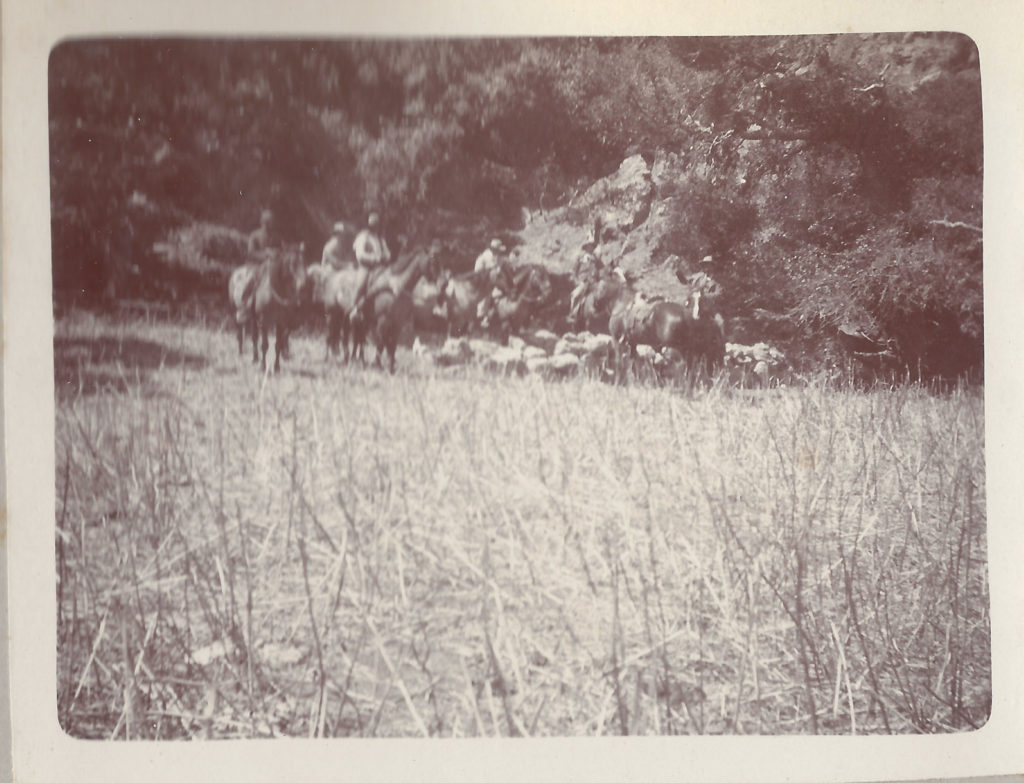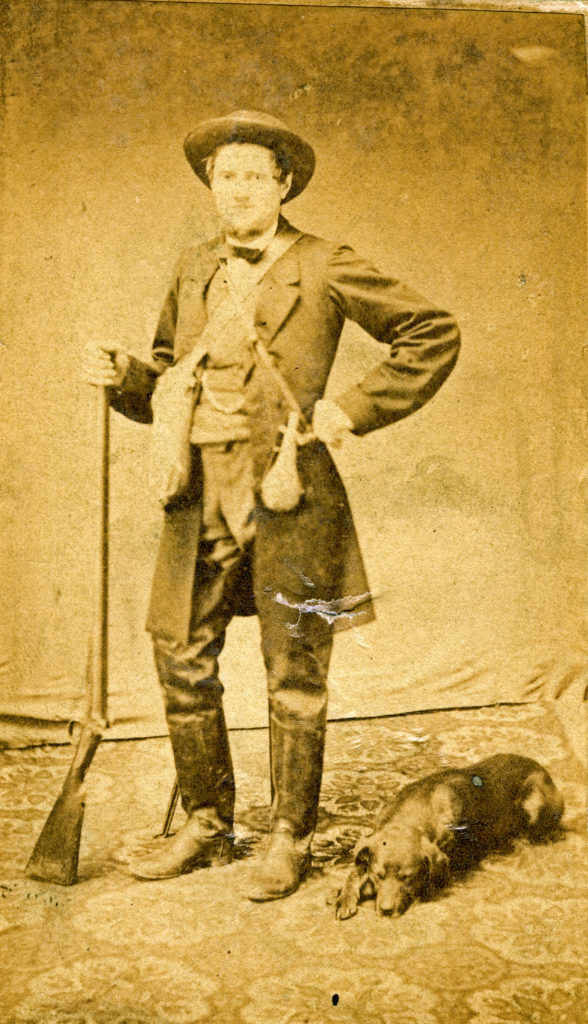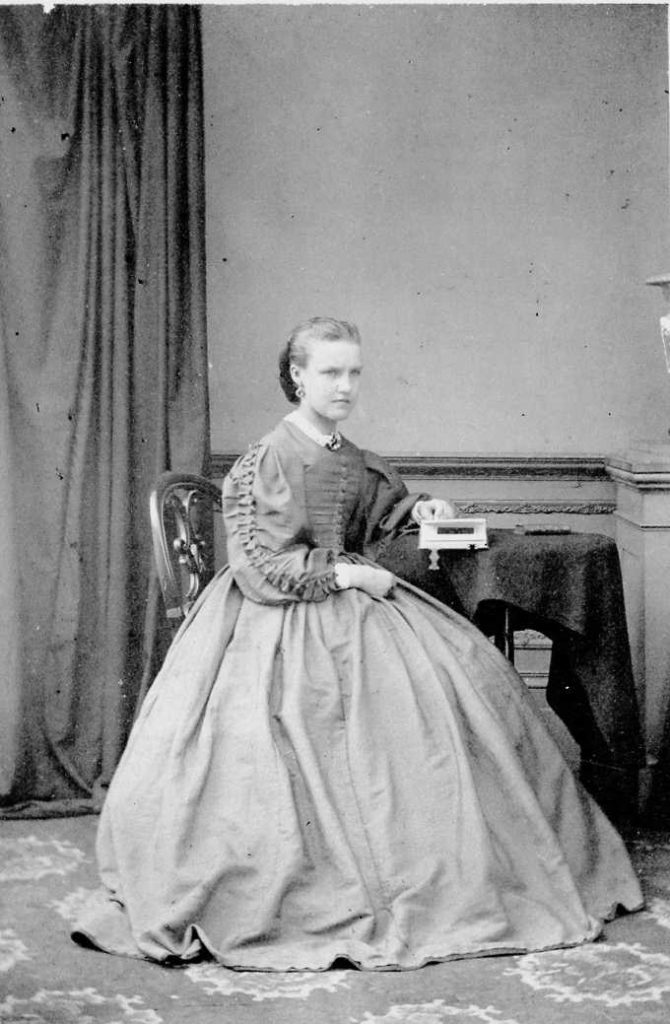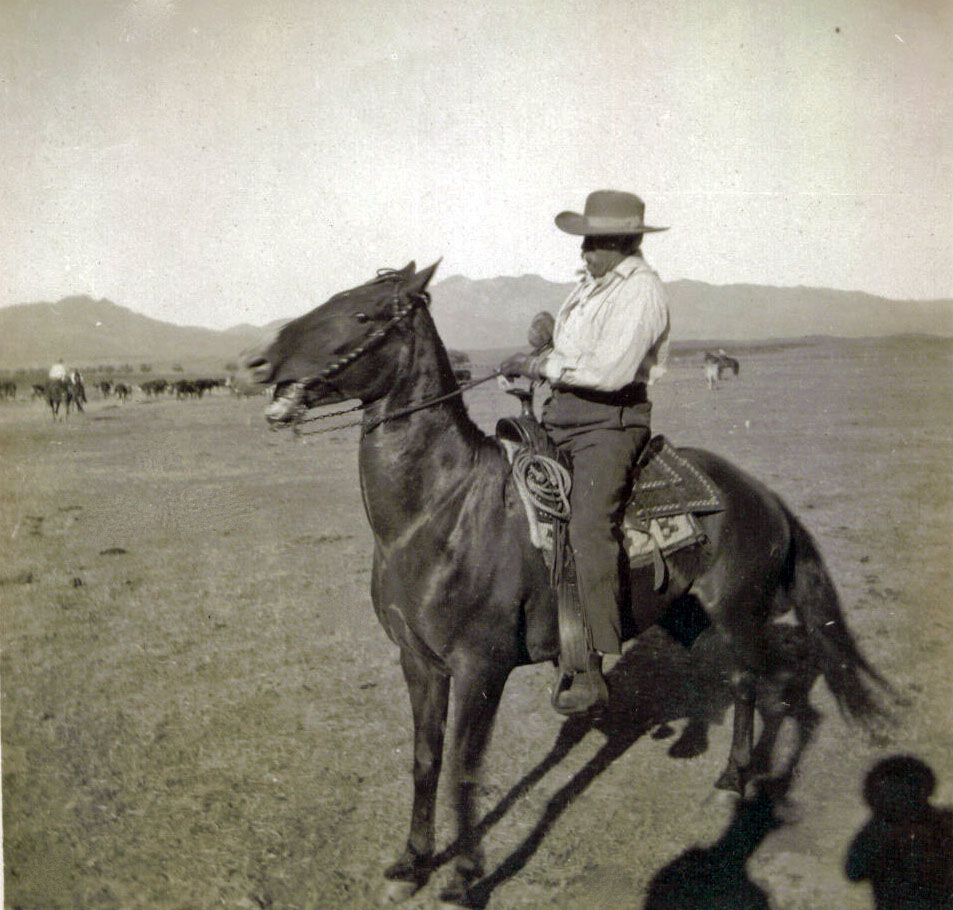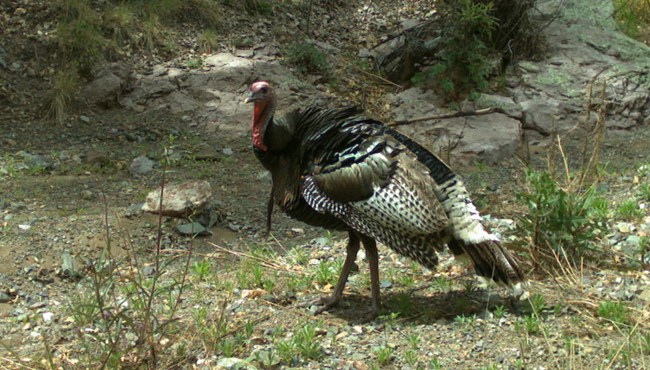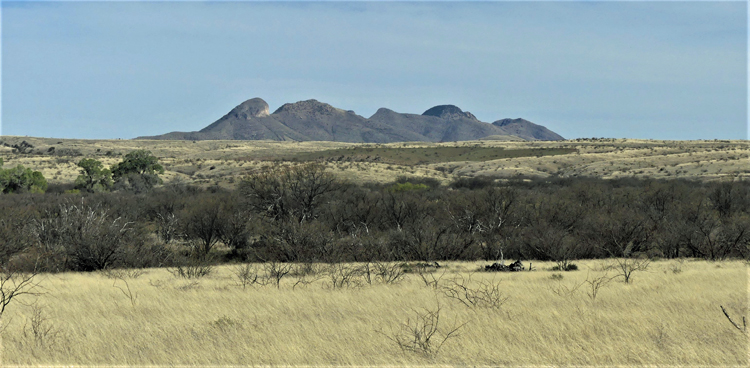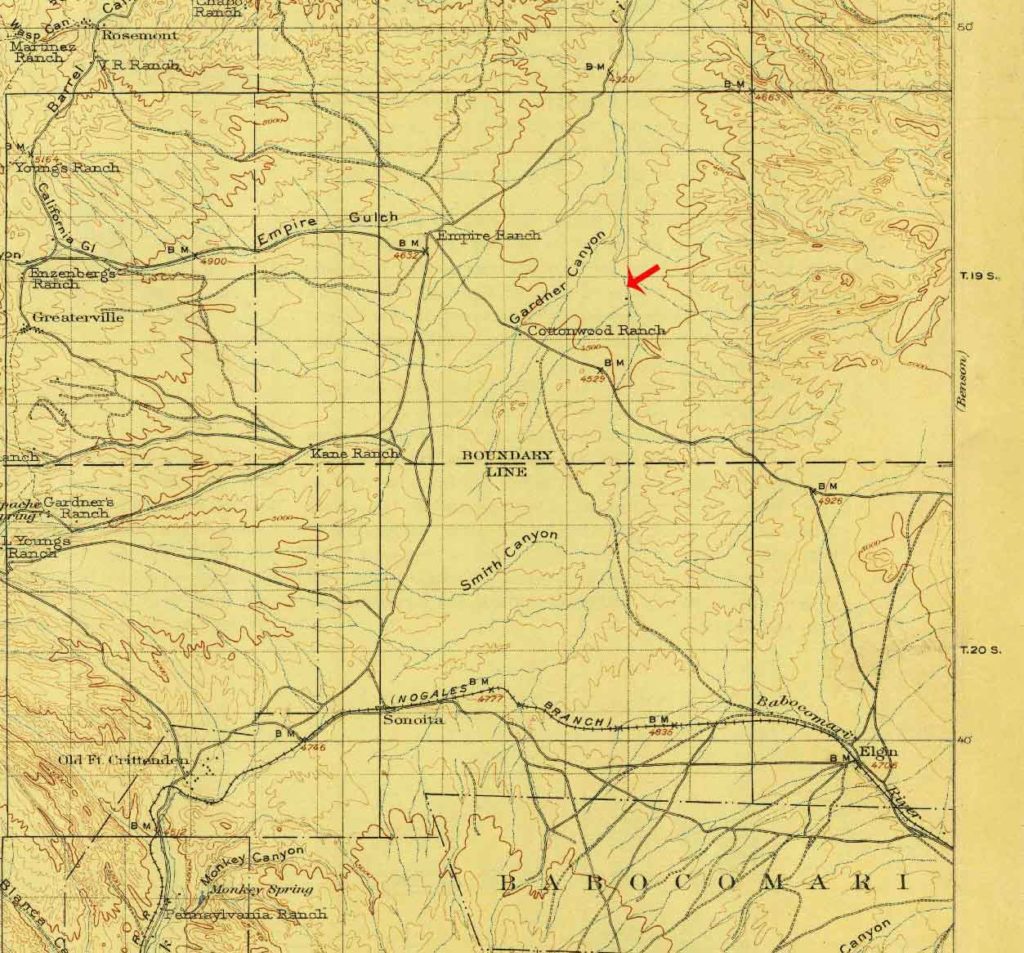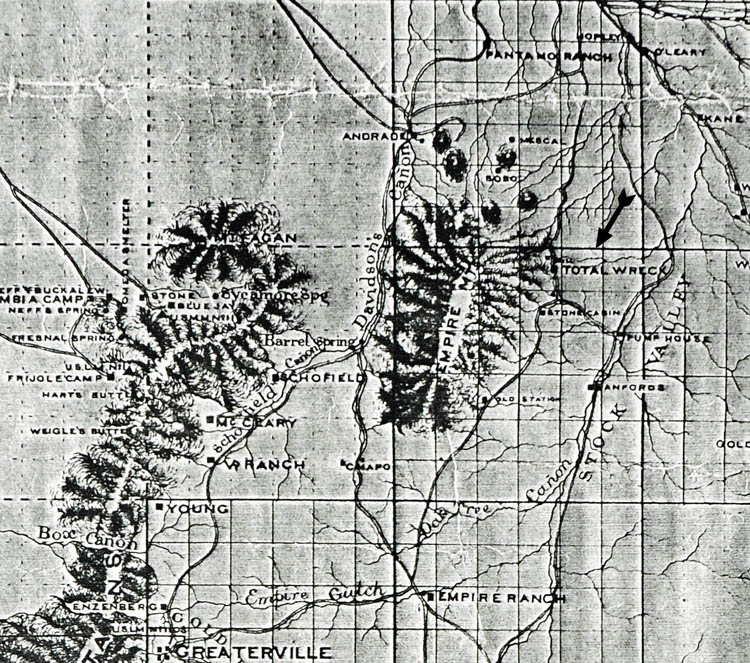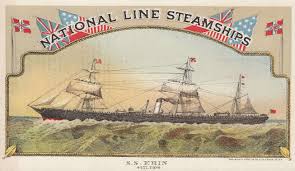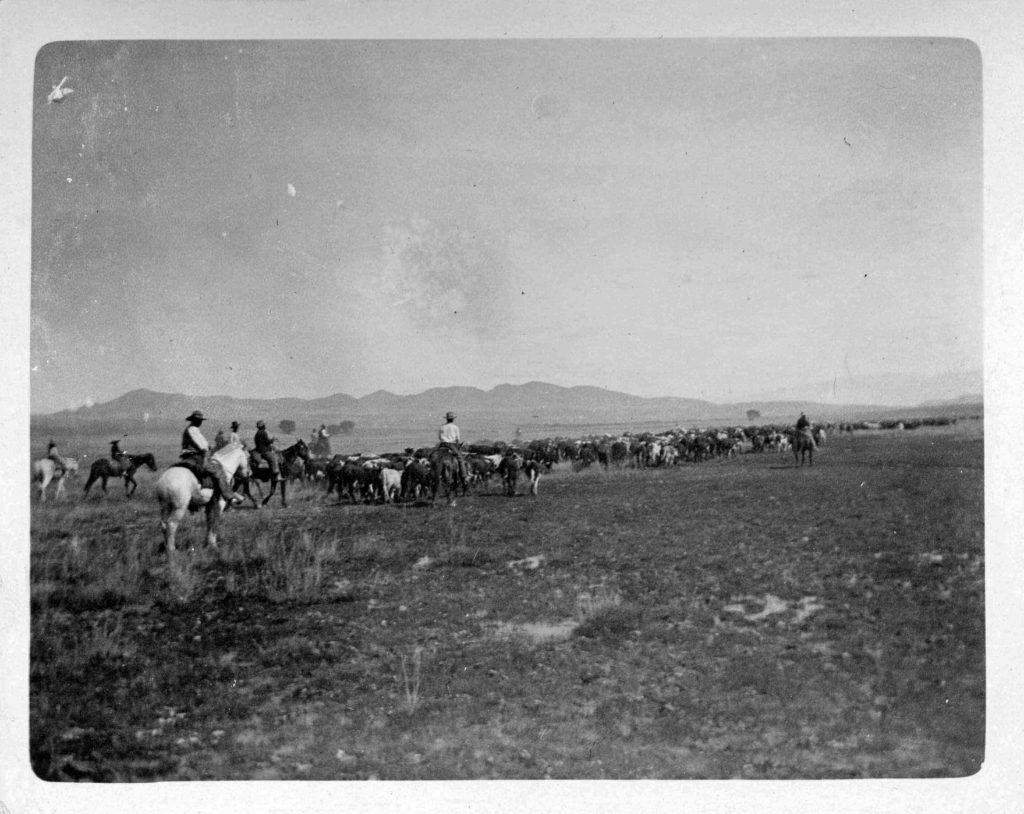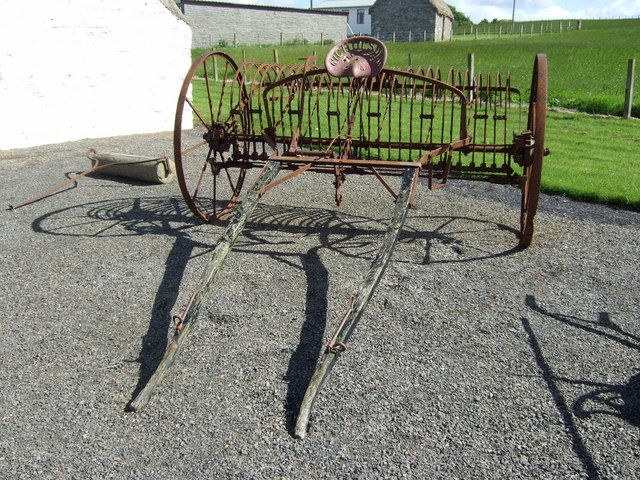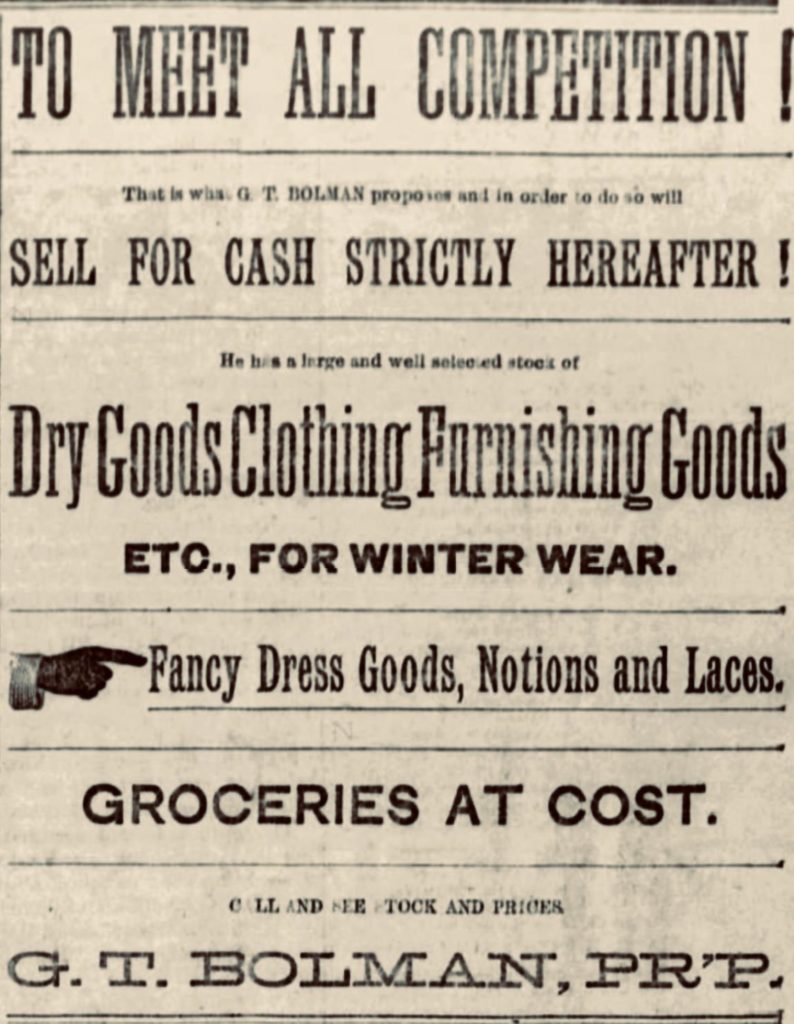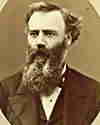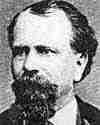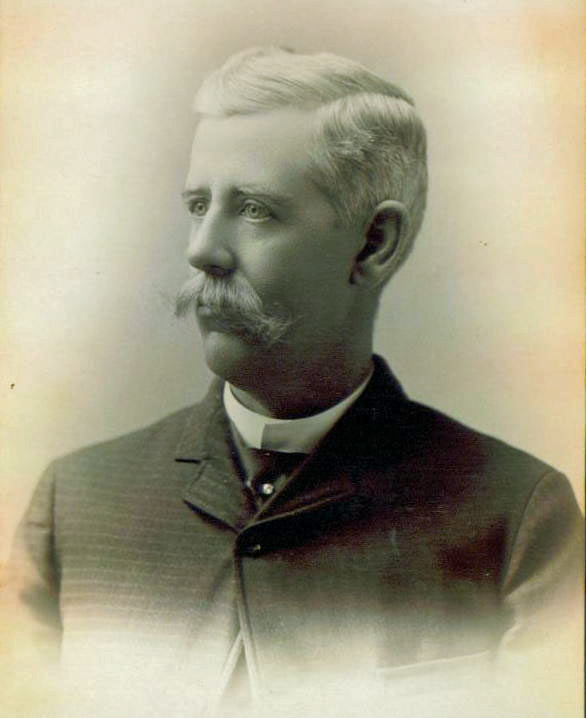Vail, Hislop, and Harvey 1877-1878
Between 1877 and early 1878 the three partners, Walter Vail, Herbert Hislop, and John Harvey worked to find cattle for the Empire Ranch and improve the four-room structure that came with the ranch purchase. They also had to contend with the dangers of raiding Chiricahua Apache warriors, and neighborly competition for land and water resources.
Horseshoeing and Interior Decorating - January 1877
In January 1877 Vail writes (1/2/1877): “We are having a great time this afternoon shoeing horse, I am head horseshoer, Hislop is 2nd and Harvey and the man help hold the horses which generally cut up a shine before we get through with them. We were all chafing Hislop this evening about fixing up his room so much he says that he intends papering the walls & if he can find them he is going to put curtains to his windows which is a good deal of style for Arizona after that if he can find a nice little Mexican girl that suits him he intends to marry her and settle down in AT for life, this of course is all talk…”
Hislop Begins to Have Second Thoughts - January 1877
Walter Vail writes (1/2/1877): “I heard Hislop wish a few nights ago that the Indians would come and take all the horses & sheep so that he might have a chance to go home, this would be a pretty quick way of selling out the business of Vail Hislop & Harvey wouldn’t it…”
Cattle at Last and No More Sheep - January 1877
In January the partners are finally able to secure some cattle, despite a brush with a group of Apaches who had been raiding in southeastern Arizona since early December. Vail writes (1/20/1877): “I expect you will see by the papers that we have been having pretty hot times with the Apaches, I was on the San Pedro river when they first broke out they came up within 50 yards of the camp and took all the horses we had staked which left me on foot as I had only taken one horse with me which was taken with the rest of the stock. I went over to receive and help gather 800 cows which we bought from a Mr. Miller, We followed the track of the Indians the next morning into the mountains but found that they outnumbered us and had every advantage in the world over our party, so we concluded to give up the chase. The Indians after taking our horses from the San Pedro they came right over to this part of the country and took horses from all the ranches except ours they only killed three men in our neighborhood though it is reported that there where a good many killed along the Mexican line.” When purchasing the cattle from Mr. Miller they disposed of their sheep. Vail also commented on his partners: “Harvey and Hislop are both good fellows but don’t know very much about cattle. Hislop thinks he knows it all which stands in the way of his learning more.”
Moving the Cattle to the Empire - February 1877
Vail describes the hardships of driving the cattle home (2/22/1877): “We were three days bringing the cattle from the San Pedro river to our ranch and a more miserable three days I never spent in my life it rained and snowed together most of the time which kept us wet to the skin which isn’t very pleasant. Then you have to stand guard over a herd of cattle half the night, and then have to roll up in wet blankets in a puddle of water. This is one of the few luxuries we have in this country, but notwithstanding the exposure I haven It had a cold for the last few months and in fact have never had a bad one since I have been in the Territory.”
Hislop’s Unhappiness - February 1877
Hislop was concerned about the Indians and the less than romantic hard work (2/25/1877): “Since last I wrote to you I have had far from pleasant times as the Indians have broken out again and run off all our neighbors’ stock and killed several men. It is an awful country to live in, sometimes I feel quite disgusted with the whole affair, as really there is no safety for life or property. When one gets up in the morning he does not know whether he will be killed during the day or not by these murdering, plundering Apache Indians or Mexicans. At present I am glad to say they have left us and our stock alone but as we are in the midst of them, I suppose it is our turn next…”
Not What He Envisioned - February 1877
Hislop writes (2/25/1877): “Now we have begun the stock business in earnest, being the possessors of 772 cows and some work oxen. It is very difficult to keep them from straying away, and I believe now we are several head short. We are waiting to put on our brand, which will be about 3 days pretty hard work, not that it is not hard enough now, as one is in the saddle from morning till night with a hot sun streaming down on him. It is not such fun as one believes and has pictured to him in England by enthusiastic cattle-raisers of America. My motto for the future is, ‘Seeing is believing.”
Branding - March 1877
Vail also found the branding taxing (3/2/1877): “We have been very busy for the last few days branding our cattle which has been pretty hard work and I am glad to say it is about finishes we only have about 70 head that all not branded, we had some cows that were so cross that we could only work around them on horseback. One cow chased me right through the kitchen window, and another one chased one of our men and your old boy right through the house, but I am glad to say that the worst of the work is over with now and I hope to have more time to write to my friends.”
Who Will Go for the Bulls - March 1877
By the end of March the “Indian troubles” had settled down, the weather was improving, and the hunting was good. The partners were debating which of them should travel to New Mexico to purchase bulls. Vail wrote (3/24/1877): “We expect to go to New Mexico for bulls pretty soon but have not decided which one of us will go yet, we are all trying to get one another to go as it will be a pretty hard trip and hard work too. Hislop and Harvey both want me to go east as they don’t care much about leaving a good bed. I have got now so that it don’t make much difference whether I sleep on the ground or in bed and sheets are something that are seldom seen on a ranch in Arizona.
Walter Gets the Job - April 1877
Walter ended up travelling to New Mexico, a trip that provide to be exceedingly difficult. He wrote (April 7, 1877): “I left home on the 1st to go to the Pecos River to buy some bulls I will probably reach there on the 15th. I am traveling through with Mr. Chisum’s outfit on horseback, I did not like to come alone as the Indians are all off the reservation in New Mexico.” Walter was looking forward to hunting buffalo and reported: “I have been very well since I left home with the exception of a little trouble with my left knee but as it don’t get any worse I think it will wear itself out.” Unfortunately, the knee did not improve and hampered and delayed him. He visited his cousin, Tracy Bolman in Kansas to recuperate (April 29, 1877): “My knee does not improve as I have hoped it would it ls better than it was but it still remains quite stiff and gives considerable pain at times. If I had known that I would have been here as long as this I would have gone home [to New Jersey] for a short visit.”
The Empire Herd - May 1877
Back at the Empire Hislop continued to be concerned about the Apaches and reported on the ranching operations (5/6/1877): “They [Apaches] have visited us again and killed two and four more men. Thank God at present I have not been near enough to see them yet and do not want to. I have had one or two scares and that is quite enough for me. We have about 800 head of cattle on the ranch, all cows, and Vail has just gone to New Mexico to buy about 40 good blooded bulls which he will bring here as soon as possible. I do not know how many calves we have at present but shall know by November, as then we shall brand and earmark them. From what I see riding round now, there are a good number. Our band of horses consists of 20 brood mares and 16 horse and mule colts, yearlings, and 9 saddle horses at present. Only 4 this year’s colts but expect to have about 16 to 20 making close on 50 head of horse stock.”
Pesky Neighbors - May 1877
Later in May Hislop wrote that his concerns about the Apaches had lessened but a new worry had arisen (5/27/1877): “At present I am glad to say all is quiet among the Indians but as the moon is now at its full, I should not be surprised any night to find that the Apaches have been here. If they clean us out I shall quit for a more civilized part of the world or go and take a berth as groom or something of that sort. I am afraid we are likely to have trouble with a neighbour who has come to settle down near us with some sheep and will not keep them on his own range, and the consequence is it drives all our cattle all over the shop. He is trying to annoy us as much as he can, but he will find he has got hold of the wrong kind to try that on.
Neighboring Rancher - May 1877
A neighbor who concerned Walter Vail was Don Alonzo Sanford who owned the Stock Valley Ranch about 5 miles north of the Empire Ranch. Walter did not trust or like the man, as he wrote to Maggie (March 7, 1877): “Our next neighbor Mr. Sanford is married to a Washington girl, we all like her very much and feel sorry for her as her husband is a rogue and scamp and one of the biggest liars I ever saw. So far we have got along together very well but how long it will last it is hard to tell I don’t think he would steal anything he couldn’t get away with but my opinion is that his getting away capacity is pretty large.”
No Place for Honest Men - August 1877
Hislop’s outlook on life in Arizona continued to deteriorate: “… but then as I have made my bed so must I lie, and I try to be contented with my lot, but I can tell you it is hard, to have to stand and suffer dishonest neighbors and blackmailers to rob you and have no justice. Arizona, or I might also say (though ’tis a sweeping assertion) that America is no place for honest men. Honest men cannot get on here and though it is nicer to have a clear conscience, it is hard to see your stock stolen and able to do nothing. My first impressions of the country and its people were that they were dishonest to the backbone, as long as they can make money they do not mind how dishonestly they get it. Such a thing as “honour” is unknown, but they are called in this country “smart” men.”
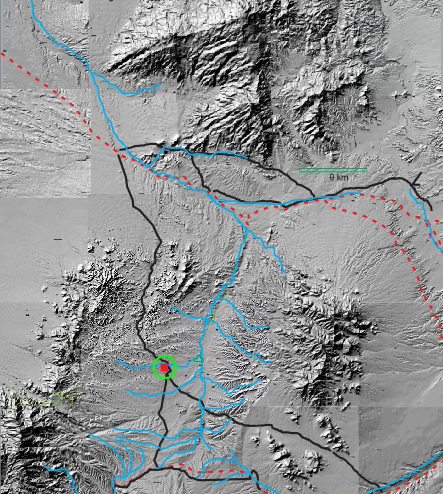
The Need for More Land - August 1877
Hislop also noted the importance of increasing the land holdings of the Empire Ranch: “I am certainly very glad we have got the ranch stocked, but at the same time I can see trouble ahead as regards the rights of certain lands, but at present we must do all in our power to get all the land we can as I easily see a stock ranch cannot be carried on in a limited space, but needs any amount of land. The glowing accounts one hears from people in London who perhaps have never seen a stock ranch as carried on in the far “West amount to nothing.”
Walter’s Travels - November-December 1877
Walter spent the latter part of 1877 traveling. He first visited his cousin Tracy in Kansas where he was able to hunt for prairie chickens. December found him in Los Angeles visiting Uncle Nathan and Aunt Anna Vail. He met an acquaintance from Arizona who: “…said that when he left our cattle where looking very well where mostly all fit for beef, but a late letter received from Harvey reports the cattle fattening off somewhat for the want of grass.” Later in the month the news from Arizona was better: “I am glad to hear that Harvey is so well pleased with the year’s increase. I will be glad to get on the ranch once more, Uncle Nathan has decided not to go into Arizona with me but will probably do so sometime in the spring.”
Another Christmas Dinner - December 1877
Hislop wrote of his Christmas dinner plans: “Next week we have to go on the hunt for our Xmas dinner. We intend to go into the mountains to shoot turkey, ducks we have plenty near the house, so you see we intend to have as good a time as possible. Our dinner is to consist of suckling pig, turkey ( if possible), ducks, quail and English plum-pudding served up in good old English style surrounded by burning brandy, by your humble servant, that will not be so bad for Arizona?”
Hislop Selling Out? - January 1878
Hislop’s outlook on life at the Empire Ranch did not improve in the new year: “I know that he [an Englishman who had visited Hislop at the Empire Ranch] was mighty glad to leave here, he was rather disgusted with the country and I am pretty nearly so. If I cannot live at peace with my neighbours I don’t want to stay in a country and it seems to me nothing but trouble the whole time, how things are going to tum out time alone will prove.” By March he was thinking of leaving: “ I am going to try to sell out, as we are losers by the operation already and our neighbours are very troublesome and about the lowest men I have ever had to do anything with, condescending to do the meanest things that are possible and everything that is likely to injure us, but let them keep it on a little while longer and they may be apt to find themselves in a funny kind of a box.”
Neighbor Perry M. Hilton - February 1878
Walter identifies the neighbor causing problems: “One of our neighbors [Perry] Hilton who has sheep does everything he can to annoy us. Harvey and Hislop had trouble with him while I was away and he does not leave a stone unturned to annoy us, he pretends to think a great deal of me but I well know he would steal the last cent I had in the world. He has commenced to run his sheep up on our range for no other reason than to scatter our cattle, but I intend to stay with him. As they say in A. T. and as long as I am here, I don’t intend to be imposed on if I can help it. I am in hopes of getting ahold of enough property inside of 6 months to keep him off our range.”
Walter also confirms Hislop’s statement about the financial health of the ranching operation at the time. “To tell the truth both Harvey and I are d— hard up and have to run things pretty close to make both ends meet. It takes all we can make and scrape to keep the wages and grub bill paid, but I hope before long to see the way clear for easier times. We are not selling any cattle now so there is not much income for the ranch.”
Walter and John Harvey’s Plans - March 1878
Walter was not unhappy about Hislop’s plans: “Hislop is talking about selling out his stock and interest in the ranch. I wish we were able to get it & I think if all goes well we will be able to do so. We could do very much better without him.” Walter and Harvey were also exploring a possible mining project. “Harvey and I intend to take up a mine claim near our place that was shown to me by a man that is working at Mr. Sanfords. He gave Harvey some of the rock to have assayed and said we might have the claim if we wanted it, so we told him we would take up the mine and if we ever made anything out of it we would give him a third of the profit. The piece we sent to Tucson to be assayed went $568 to the ton but we cannot tell anything about how it will pan out when we go down on it a ways.”
A Final Farewell to Hislop - June 1878
In April Hislop received word from England that his brothers had placed the family finances at risk: “Words are not to be found in any language that I have studied to express my sorrow and indignation concerning Charlie’s and Fred’s affairs in Gutter Lane. I do not understand your letter at all concerning reversionary interest but hope very soon to be before you in person. Anything that lies in my power to help you I will willingly do.” By June Hislop had embarked by ship from New York to London.
Walter wrote: “I have been so busy for the past 10 days that I have not had time to do anything outside of the cattle, but I am glad to say that we are through with the hardest of the work. We have been counting the cattle and branding the young calves of which there are about 200 head which is an increase since we branded last fall. Hislop will probably start back for England in about two weeks.
I think that England will suit him better than this country and am certain that it will suit both Harvey and I, better to have him there than on the Empire Ranch.” Walter bought Hislop’s shares in the ranching operation for $7,000, an amount he borrowed from his Aunt Anna Vail.
Horses From Mexico - June 1878
In June Walter purchased 75 head of horses in Sonora, Mexico. He was pleased with what he saw on his return. “When I arrived at the ranch I found everything in good shape on the ranch all our horses are in fine fix and some of our mares are fatter than I like to see them. The cattle have also improved we sold 19 head of yearling steers a few days ago for $15 a head and I think could sell all we have at that rate but do not sell unless we are compelled to as in a year from now they will be worth from $20 to $25 a head which is good interest on the money, but as we have been paying at the rate of $300 a month in wages for the last six weeks it takes a good deal to run the things, but now we expect to cut down expenses as we will not require so much help until fall.”
Finances are Tight - August 1878
The end of summer brought additional financial worries to the partners. “Just at the present time we are very hard up for money that is Harvey and I as we have had money to pay out on account of the mine which we have stopped work on for the present as it was becoming quite expensive and we do not care to run in debt on account of it. We also lost all the adobes we had made for the addition to our house & then to crown all the government station had been taken from us which we have been clearing about $50 a month on, and while in town last time I paid for a mowing machine and horse rake which when delivered will cost us about $300. I mention these things just to show you why we are hard up just at the present time. but I don’t think we have any reason to complain of our losses as there have been so many that have met with heavy losses on account of the heavy rains we have had of late but we ought not to complain as it has given us grass for a year.”
Hoping Ned Will Join the Partnership - August 1878
Walter also expresses his hope that his brother Ned would come to Arizona instead of planning to move to Kansas to work with Cousin Tracy. “I am sorry to hear that you are going to Kansas as I am afraid you will not like it there as well as you did in New York as the people there as a rule are a very ordinary class that is those that Tracy does business with, but I think whatever Tracy says he will do for you he will and I hope it will all turn out for the best in the end. I wish as long as you leave home that you were coming out here with me as it would be much nicer for both of us to be together and I think as far as your first pay is concerned here you might do better in Arizona but you would not be amongst friends and then things are in a very unsettled condition as regards the business prospects of the country here we are all in hopes that there will be a change for the better soon.”
Murders in Davidson Canyon - September/October 1878
Captain J.H. Adams and Cornelius Finley, who were managing a mine near Patagonia, were murdered in Davidson Canyon, north of the Empire Ranch, on Sept 2, 1878. According to Edward Vail Adams and Finley had stopped at the Empire Ranch: “As they arrived too late for dinner and were anxious to reach Tucson my brother told the cook to get them a light lunch and let them go. They had a buggy and good team of horses – I think it was a Tucson livery team of horses – so expected to make the trip quickly.” Upon learning of the shooting “My brother Walter immediately saddled a good horse and taking some of his best men with him, started for the scene of the murder. When they arrived, they found their guests of a few hours before dead and riddled with bullets.”
The murderers, who were determined to be Mexicans from Sonora, managed to escape across the border, where they were captured in Santa Cruz, Sonora. “Walter L. Vail, Esq. came to Tucson last Monday having been in Sonora about three weeks trying to secure the murderers of Adams and Finley… Mr. Vail left his ranch in company with Mr. Harvey, who was the duly authorized agent to receive the prisoners… soon after it was known that the criminals were in Sonora.”
By the time Vail and Harvey arrived the prisoners had been moved to Magdalena. The Prefect of Magdalena would not hand them over without an order from the Governor of Sonora. Vail and Harvey rode 150 miles to Ures to petition the Governor who “… said he could do nothing without authority from the supreme government of Mexico…” A letter was dispatched to Mexico City but since a reply would take at least a month the “extradition” party returned to the U.S.
Walter Elected to the AT Legislature - October 1878
In October 1878 Walter was also elected to Arizona’s 10th Territorial Legislature as a representative from Pima County. He was thus required to travel to the territorial capital in Prescott for legislative sessions. In March 1879 Walter’s letter to Maggie notes how Arizona is becoming more civilized. “I found yours of Feb 2nd and the 6th in Tucson on my arrival and was delighted to hear from you and I would give anything Darling as snug as you please with a bright fire burning on the fireplace and if you were only here now I would be perfectly happy. This country is quite different to what it was a year ago there are a great many ladies coming to the country and I think you would be quite surprised if you could attend a party in Tucson there has been a new hall built which is a prettier room for dancing than any in Plainfield. If we could only be together this evening, if you were to drop down in my room, I don’t think you would think it such a horrid place.”

